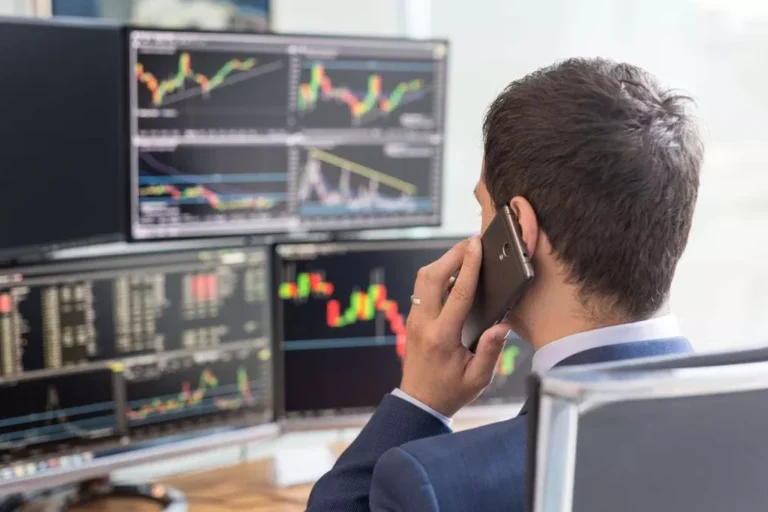Market Maker Meaning, Function & How They Regulate Markets?
One instance of a trading pair is ETH/USDT, where ETH (Ethereum) and USDT (Tether) are two different tokens that can be traded towards each other. In this case, a trader might purchase ETH with USDT or sell ETH for USDT, relying on their trading strategy and market conditions. Liquidity is essential amms meaning for the functioning of the financial system, serving as its lifeblood. It refers to an asset’s capacity to be rapidly offered or exchanged for one more asset without significantly affecting its value. Financial systems can come to a standstill when funds usually are not readily available.

And if you need to promote round a thousand shares then you’ll have to go nearly Rs.15 down. Even for the lay investor it is quite obvious that there are two kinds of risks right here. Firstly, the gap between one of the best buy and the best promote is Rs.four.
Dynamic Automated Market Maker (damm)
The idea of a liquidity pool is simple but very powerful, as it does not need to rely on exterior market makers to provide liquidity to an trade continually. Hence, to attract a larger user base, enhancing the onboarding process and optimizing the person interface are imperative. AMM assists within the institution of a liquidity system to which anybody could contribute. This eliminates the necessity for a middleman, chopping transaction costs for traders.

In an effort to combat the dangers of trading, market makers are given the benefit of a two-way quote. Consequently, they provide to buy and promote costs together in a quote. The profit from a difference within the prices is a reward they earn for taking the danger.
Share Market Stay
Our Goods & Services Tax course consists of tutorial movies, guides and expert help to assist you in mastering Goods and Services Tax. Clear also can help you in getting your small business registered for Goods & Services Tax Law. Akancha creates content material for Finance, Fintech, SaaS, and Technology companies.
Effectively, these market makers make the market lots safer and safe. Since they provide two means quotes, they cut back the basis threat and the trading threat for the market players. In the process, the market makers take the risk of market volatility and provide liquidity out there. Any dealer can see the danger that is evident within the above trading price mix.
Only high-net-worth people or companies may turn out to be liquidity providers for conventional market makers. On the opposite hand, any entity can turn out to be a liquidity provider, but it must meet all the necessities coded into the smart contract. Balancer, Uniswap, and Curve are examples of automated market makers. AMMs have made it possible for decentralized finance to exist and considerably enhance the capabilities of decentralized exchanges.
Begin Buying And Selling Now
The variety of patrons and sellers was small in DEXs as it was a model new expertise. Automated market makers mounted this downside of restricted liquidity by creating liquidity pools. In simple terms, liquidity pools are a collection of digital assets that enable trading on decentralized exchanges (DEXs) without intermediaries. Liquidity pools provide a gradual supply of patrons and sellers, guaranteeing that buying and selling is executed rapidly and efficiently.
High liquidity is critical for a wholesome trading surroundings. Low liquidity results in extreme volatility in the market’s asset values. AMMs additionally permit anybody to turn into a liquidity provider, which comes with perks. Liquidity providers are paid a small percentage of the fees collected on transactions conducted via the pool. AMMs are the underlying protocol that helps all decentralized exchanges (DEXs). Automated market makers are autonomous buying and selling mechanisms that function without centralized exchanges.
By turning into a Liquidity Provider or LP, you possibly can earn extra revenue in your crypto assets whereas still holding them. It’s a simple means of depositing your assets into a pool with different customers, and then incomes a portion of the charges generated from buying and selling activities. Additionally, you can trade your belongings with different LPs on a DEX and obtain liquidity pool tokens representing your share of property. To discern essentially the most fitting liquidity swimming pools, customers should undertake a complete evaluation considering the varied use instances they serve. Let’s take the instance of Uniswap, which is a decentralized change. Since it operates on open supply, It allows customers to create new liquidity swimming pools for any token without charging any fees.
What Is Market Making And How It Impacts Liquidity
A vAMM just isn’t used for spot buying and selling however for price discovery in handling leverage. The vAMM calculates the exit or entry value every time one makes a trade. This calculation takes place the same method as worth calculation happens on AMM-style exchanges. The first-generation vAMMs made use of a fixed method to calculate prices. But the second-generation vAMMs use a robust liquidity design and digital tokens to allow makers to supply liquidity with leverage. AMMs are financial instruments unique to decentralized finance (DeFi).

Our specialists suggest the best funds and you will get excessive returns by investing instantly or via SIP. Download Black by ClearTax App to file returns from your cell phone. Virtual Automated Market Makers (vAMM) is a new sort of AMM that builds on this basis and expands its application from token swaps to perpetual contracts.
Understanding Digital Automated Market Makers (vamms)
This applies to traditional finance and rising blockchain-based monetary services, generally known as decentralized finance or DeFi. Retail brokerage corporations employ market makers to maintain stocks liquid. They make prices extra environment friendly for retail traders and hold the order flow shifting. They earn profits from the bid-ask unfold and get their brokerage cuts from even commission-free trades.
These progressive models will decrease fees and supply higher liquidity for crypto merchants. Crypto trades occur instantly between consumer wallets on a decentralized exchange. These transactions are also called peer-to-peer (P2P) transactions. As a liquidity provider, the rewards are in the type of trading fees and yield farming rewards.




Sorry, the comment form is closed at this time.